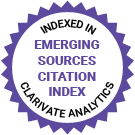JMIR Research Protocols
Protocols, grant proposals, registered reports (RR1)
Editor-in-Chief:
Amy Schwartz, MSc, Ph.D., Scientific Editor at JMIR Publications, Ontario, Canada
Impact Factor 1.5 CiteScore 2.4
Recent Articles

Gestational diabetes mellitus (GDM) is one of the most common complications in pregnancy. Optimal glycemic control is key to reducing the risk of adverse pregnancy outcomes. If glycemic control is inadequate, additional medications are needed. A large body of evidence has shown that metformin is an effective medication for GDM. Compared to the immediate-release formulation, the prolonged-release (PR) formulation of metformin offers some advantages with a single daily dose and has less frequent side effects, leading to better compliance. To date, no study has specifically reported the effectiveness of metformin PR in the treatment of GDM or the time required to achieve glycemic control after treatment. The results will help clinicians plan a better choice of treatment and follow-up for women with GDM and inadequate glycemic control.

Background: Mandibular advancement devices (MADs) are a valid alternative for patients with moderate obstructive sleep apnea (OSA) who do not tolerate continuous positive airway pressure (CPAP). Despite their efficacy, both adherence and long-term results remain a challenge. Myofunctional therapy (MT) has shown potential to improve upper airway muscle tone and reduce OSA severity, but its role as an adjunct to MAD treatment is still unclear. This protocol evaluates whether app-based myofunctional therapy (Airway Gym®) can improve adherence and clinical outcomes in patients with moderate obstructive sleep apnea (OSA) treated with mandibular advancement devices (MADs). We describe the study design.

Subjective cognitive impairment (SCI), the earliest sign of cognitive decline, affects 1 in 9 Americans aged older than 45 years. It negatively affects quality of life and is a risk factor for dementia. Healthy eating is a primary preventative strategy to impede cognitive decline. In the short term, cognitive function may be impacted by the consumption of a single meal, suggesting that the meal components, and not solely the metabolic dysregulation resulting from the condition of obesity, can impact cognition. The effect of meals on postprandial cognitive function is influenced by their macronutrient composition. A meal with a low-quality fat composition can acutely impair postprandial cognitive function. Walnuts are a source of high-quality fat as well as polyphenols. Some randomized control trials have shown that walnuts may benefit cognitive function. However, it is not clear whether a single meal high in walnuts can improve cognition in adults with SCI.


Post-operative complications remain a major challenge in healthcare systems with more than 70% of post-operative in-hospital mortality occurring on general wards. Current practice relies on intermittent spot check monitoring of vital signs, guided by track-and-trigger thresholds, such as early warning scores. Evidence shows that up to four hours before an adverse event, abnormal vital signs can be detected in up to 60% of patients. Continuous vital signs monitoring in general wards offers the potential to detect clinical deterioration earlier. However, prospective evaluations of continuous monitoring on general wards remain limited.

Heart failure (HF) is a complex clinical syndrome with a high morbidity and mortality rate. Despite advancements in treatment, the recurrence of HF remains a significant challenge, often leading to deteriorating health conditions and increased pressure on the health care system. Early detection of recurrence is pivotal in mitigating and managing the adverse outcomes associated with HF.

Anhedonia is a core symptom of depressive disorders. Although group-level cutoff points for the Snaith–Hamilton Pleasure Scale (SHAPS) are established, real-time, individual-level monitoring remains limited. Ecological momentary assessment (EMA) enables high-frequency sampling, and simple moving averages (SMA; 7/14/30 days) offer an interpretable way to smooth daily signals and surface early-warning trends.


Data science health research (DSHR) uses novel computational methods and high-performance computing to analyze big data from conventional and nonconventional health and related sources to generate novel insights and communications. DSHR creates assets but generates ethical, legal, and social challenges. Key gaps in current ethical oversight of DSHR include blurred boundaries between research and nonresearch data use, inadequate protection of data donors, power imbalances that risk extractive research practices, algorithmic biases, and regulatory inadequacies. Nigeria, a typical low- and middle-income country with rapidly expanding DSHR, exemplifies this environment and concerns.

Effective blood pressure (BP) monitoring is vital for the management of hypertension, allowing timely adjustments in treatment. This study focuses on the development and implementation of an innovative, locally designed eHealth technology, the HeartCare@Home system, to enhance the control and management of hypertension in outpatient noncommunicable disease (NCD) clinics in Rwanda. The HeartCare@Home system comprises a mobile health app that incorporates rapid SMS technology, an integrated dashboard for signal reception at the clinic office level, and a clinical decision support algorithm.

Physical activity (PA) is feasible, safe, beneficial, and recommended for pediatric patients with cancer. Nevertheless, PA levels remain low due to treatment-related effects (eg, fatigue, pain), isolation and immunosuppression, geographic and transportation barriers, and limited access to population-specific programming. Delivering PA by videoconference may address some of these barriers. Thus, IMplementation of Physical Activity for Children and adolescents on Treatment (IMPACT) was developed. IMPACT is an individualized, tailored PA intervention delivered by an exercise professional over videoconference and is being evaluated in a hybrid effectiveness-implementation trial.

Pregnancy is a crucial stage characterized by an increased demand for various nutrients. The role of micronutrients becomes especially important during pregnancy and infancy to support neurodevelopment. Micronutrient deficiencies are prevalent in low- and middle-income countries due to socio-economic disparities, limited dietary diversities, and barriers to quality antenatal care. This results in women of reproductive age and developing offspring being disproportionately affected. Despite extensive research, evidence remains fragmented, leading to a lack of comprehensive synthesis.
Preprints Open for Peer-Review
Open Peer Review Period:
-
Open Peer Review Period:
-
Open Peer Review Period:
-













